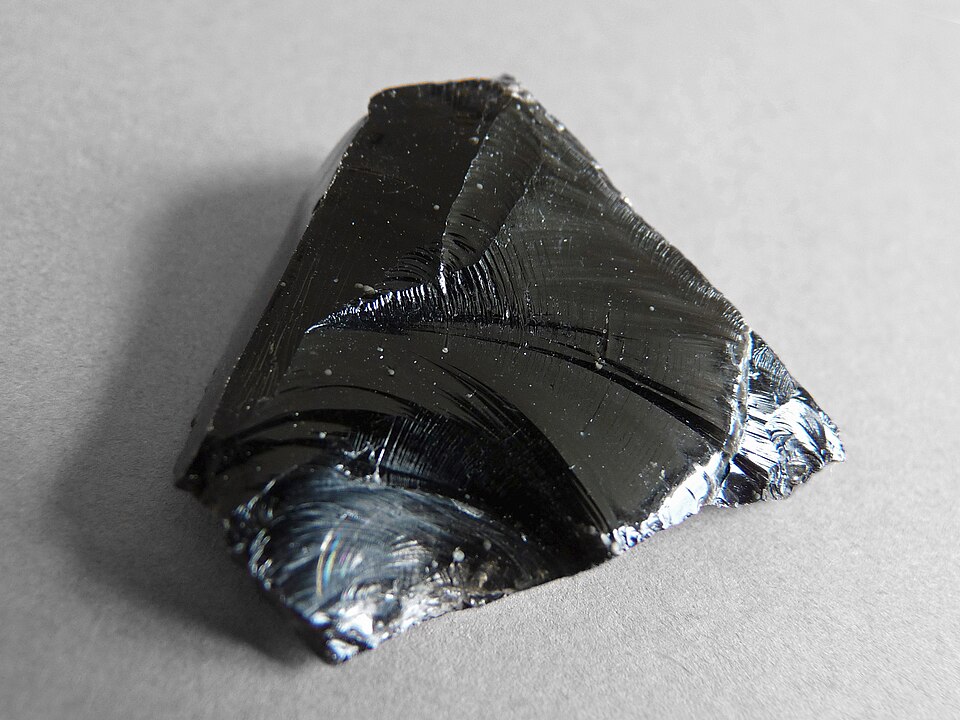
How is nuclear fuel stored in glass? Spent nuclear fuel is not stored in glass. Spent nuclear fuel can be turned into glass through a process called vitrification.
The word “vitrification” comes from the Latin “vitrum”, which means glass. We still use the word in some circumstances. The word “vitriol” comes from the same root. It meant a mineral salt used in medicine and alchemy that looked a lot like glass. It was bitter and caustic, which is how we got the meaning of “vitriol”. But, I digress.
Vitrification is the process by which a substance is transformed into glass. The majority of the glass we come into contact with during our daily lives is made from silica, which is basically sand, mixed with a couple of other things (soda ash and limestone). However, there are a lot of different types of glass and many materials can be turned into glass. This is because of the atomic structure of glass. The atomic structure of many solids is made when the atoms alone in a crystalline state, that is they have a rigid, and usually symmetrical structure. A liquid is formed when he atoms of the material lose their crystalline structure and spread out. A glass has a structure that is rigid, but is not crystalline. The atoms are not in a symmetrical pattern, but are more random. Despite this, they cannot move and the glass is solid. The only way to do this is to take a material when it is in liquid form and cool it so rapidly that the molecules set solid in the position they are in. They don’t have time to form a crystalline structure. This process is called vitrification.
Vitrification of nuclear waste is one possible way that it can be stored. There are roughly 440 nuclear power plants around the world. They produce about 10% of the world’s electricity. There are 70 nuclear power plants that are currently being constructed as you read this, and that number will probably increase. Nuclear power plants have a lot of advantages, but they also have some obvious disadvantages. They are far better than coal and oil fired power plants because they can make a lot of energy from a relatively small amount of fuel. They don’t produce carbon dioxide or any other greenhouse gases. They are more efficient, very reliable, and far safer than they used to be. The fuel is also abundant and in no danger of running out. However, there are the obvious disadvantages. Countries with nuclear power, could potentially use it to make nuclear weapons. Nuclear power plants are safe, but there are still occasional accidents and an accident from a nuclear power plant, no matter how rare, would be far worse than one in a fossil fuel burning plant. And probably the greatest disadvantage is that they leave a lot of spent nuclear fuel that has to be disposed of.
Nuclear fuel consists of plutonium and uranium. Spent nuclear fuel is still highly radioactive and it will stay radioactive and very dangerous for potentially hundreds of thousands of years. It has to be stored somewhere where it cannot release its radiation. One way is to bury it in salt deposits, but nothing is perfect. They have to make notices to warn people 100,000 years in the future what is there. That is very difficult to do because we don’t know what kind of intelligent life will be here in 100,000 years.
One idea is to convert the spent nuclear fuel into glass blocks. Glass is incredibly durable and doesn’t leak chemicals. Nuclear waste stored as glass blocks could potentially survive for millions of years. As we’ve talked about, the process of vitrification is technically simple. You just have to melt a substance and then cool it very quickly so it sets. It is a little more complicated when it is nuclear waste you are doing it with. The nuclear fuel on its own won’t become glass, so other things are added to it. The most common are silica and boron trioxide, which form a glass called borosilicate. It is much stronger, more durable, and more resistant to heat than regular glass. It is perfect for storing nuclear fuel. The spent fuel is dried and made into a powder. Then, the fuel, the silica, and the boron trioxide are all melted down. The molten mix is poured into a stainless steel canister about 1.3 m tall and rapidly cooled. The result is a very resistant glass block that contains the radioactive waste. It is expensive and not all nuclear power plants are set up to do this. It is not necessarily the best way of dealing with the nuclear fuel. And this is what I learned today.
Sources
https://en.wikipedia.org/wiki/Borosilicate_glass
https://www.azom.com/article.aspx?ArticleID=18307
https://en.wikipedia.org/wiki/Vitrification
https://www.etymonline.com/word/vitriol
https://www.etymonline.com/word/vitrify
https://www.tandfonline.com/doi/pdf/10.1080/00107516908204405
https://en.wikipedia.org/wiki/Glass
https://www.statista.com/statistics/267158/number-of-nuclear-reactors-in-operation-by-country
Image By Ji-ElleIt feels nice and warmIt feels like a love storm – Own work, CC BY-SA 3.0, https://commons.wikimedia.org/w/index.php?curid=15527635
